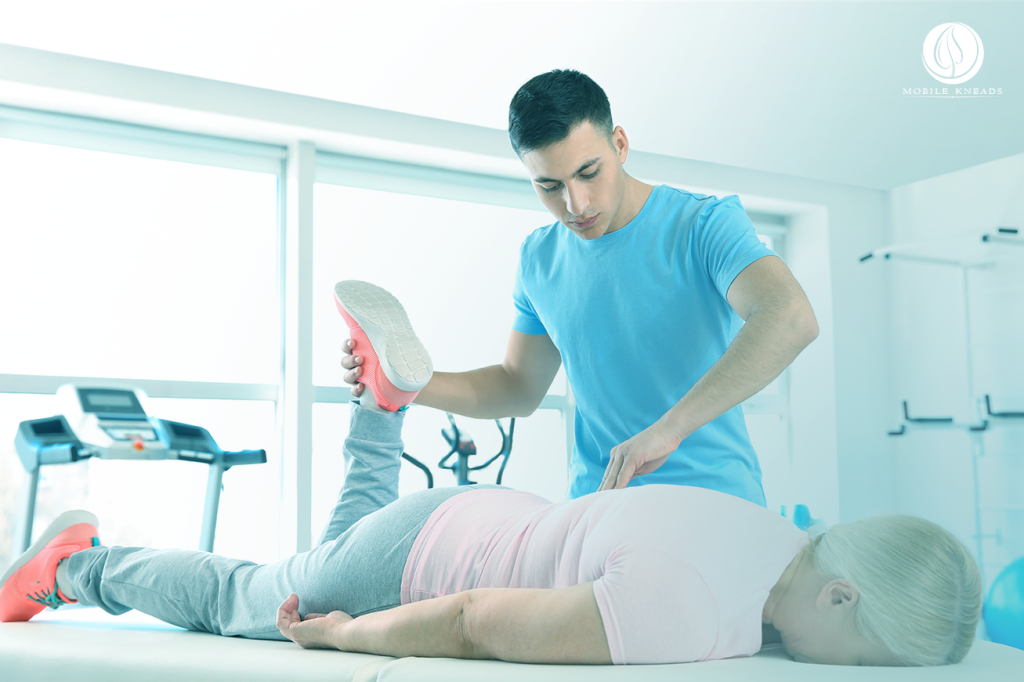Medical massage employs a variety of treatments. This includes trigger point therapy, deep tissue massage, myofascial release, lymphatic drainage, and heat and cold therapy, to assist your body in healing from intermittent and chronic pain.
The term ‘medical massage’ and ‘therapeutic massage’ are interchangeable. The practice of medical massage suggests that therapy has wellness benefits for the human body. Segment-reflex massage is another name for it.
Medical massage treatment encompasses various disciplines, skills, and expertise. It’s a fundamental approach for managing side effects such as hypertension, anxiety, tension headaches, sores, and disease prevention. Orthopedic massage is also a medical/therapeutic massage treatment for shoulder and extremities disorders caused by sports injuries, occupational injuries, vehicle accidents, and other causes.
The goal of medical massage treatment is to provide medical help. It was sometimes defined as massage therapy when dealing with a registered condition. Doctors may refer to a massage therapist as a qualified specialist. Some massage therapists work in hospitals or other clinical settings. But, even outside of a typical working environment, an individual may be engaged in medical massage.
Key Differences Between Medical Massage Treatment and Massage Therapy
There is a narrow line between what is a medical massage treatment and a therapeutic massage. For example, general soreness in a specific place responds to a therapeutic session. If a tight, overstimulated muscle caused your pain or discomfort, you should feel better after the session. Massage therapy is a fantastic kickstart to becoming healthy.
However, the muscle and soft tissue must be re-educated. It will allow them to improve and maintain their health. A short, constricted muscle could be re-taught to stay lengthened, allowing proper blood flow, nerve innervation, full range of motion, and reducing pain or discomfort. Many of the same techniques as therapeutic massage are used in medical-oriented massage and its sophisticated modalities.
Medical massage treatment aims to make lasting modifications or, in some situations, such as paraplegia, to keep the tissue healthy. Professionals assess the effectiveness of medical massage by seeing a reduction in pain or discomfort over longer lengths of time between sessions.
A general guideline highlighting the fundamental differences between medical and therapeutic massage is provided below.
Medical Massage Treatment
- Muscles, fascia, and trigger Points are all treated
- Addresses muscle shortening and over-lengthening
- Muscle sedation or stimulation
- Specific and concentrate based on a treatment plan session
- Sessions can cause some minor discomfort
- Sessions last within 30–45 minutes.
- Each session will gradually become longer and longer in duration.
Massage Therapy
- Muscles are treated, and fascia and trigger points may be affected
- Addresses muscular shortening
- Muscles and the mind are sedated
- Usually includes the entire body
- Relaxing
- Sessions lasting 30-60-90 minutes
- The length of the session will differ depending on the type of treatment
You should get a treatment if you experience:
- Pain
- CT Syndrome
- Sciatica
- Herniated Discs
- Scoliosis
- Migraines
- Muscle Spasms
- Whiplash
- Injuries
- Chronic muscle tightness/tension, etc.
You should get massage therapy if you experience:
- Stress
- Discomfort
- Insomnia
- Depression
- Fatigue
- High Blood Pressure
- Muscle tightness/tension
- Asthma, etc.
What Is Considered A Medical Massage Treatment?
You may have wondered how a massage differs from one given in a spa vs one given in a therapeutic setting. After all, they both involve someone exerting pressure on your body. Although they share that similarity, there are several significant differences between the two.
As you might expect, the main distinctions are in the goal of the massage, but also in the reasons why a person can prefer one form of massage over another. The end purpose of the massages may also differ.
Medical massage is not the same as a soothing massage for stress alleviation, like a Swedish massage in a relaxing spa. Some disorders do not respond to relaxation massage alone.
Getting rid of chronic pain does give relief, but there is often some discomfort associated with getting rid of that persistent illness. Medical Massage is not restricted to a single technique. While a spa massage may feel similar to a clinical massage in some ways, the techniques utilized will differ.
During a spa appointment, you will receive a standard Swedish Massage that is more basic and focuses on your relaxation. A professional may, but, use a broader variety of modalities, such as Trigger Point Therapy or Myofascial Release, during a medical massage to aid in muscle health recovery.
Benefits of Medical Massage Treatment
- Assists in releasing tense and aching muscles that can lead to Ischemia (Ischemia: A lack of blood supply to soft tissues, which causes hypersensitivity to the touch and allows for further tissue injury).
- Assists in the relief of nerve compression or entrapment. (Soft tissue pressure on a nerve can contribute to muscular atrophy, referred pain, paresthesia, and disorders such as pseudo sciatica, piriformis syndrome, pseudo angina, etc.)
- Deactivates myofascial trigger points (Trigger Points: Areas of high neurological activity, which refer to pain in other parts of the body.)
- Reduces inflammation and pain
- Reduces stress and improves circulation
- Improves your flexibility and range of motion
- Assists in the improvement of posture and coordination
Conclusion
Medical massage treatment for numerous smooth tissues and psychiatric disorders can be effective. It can improve a person’s general health and well-being. The effects of various circumstances, such as stress and anxiety relief, rehabilitation after an accident, and depression relief, have alleviated them.
Did you find this post helpful? Check out the Mobile Kneads blog and book your customized wellness treatment through our app!



